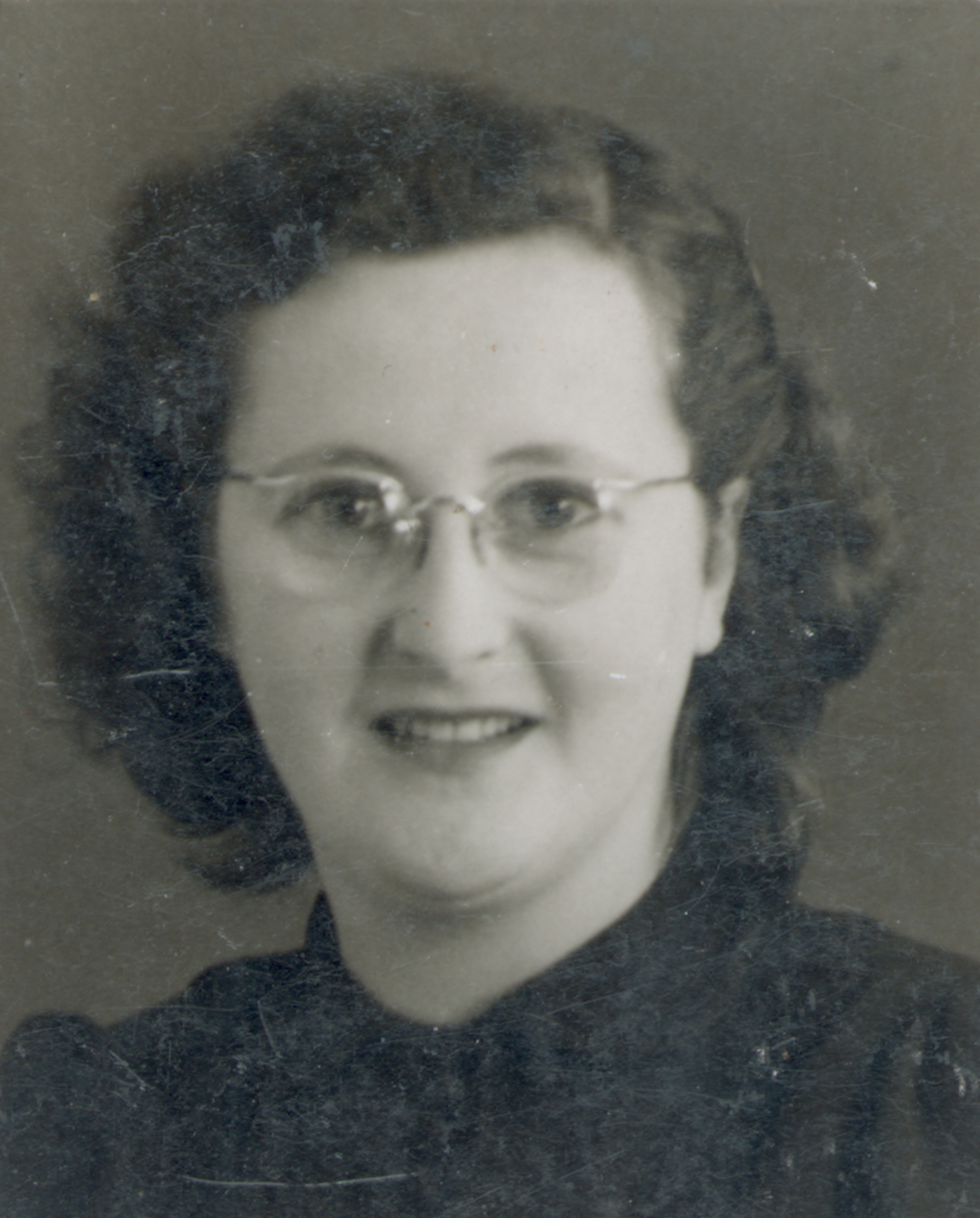Betje Jakobs
Betje Jakobs was imprisoned in camp Westerbork and Auschwitz together with the people in hiding from the Secret Annex. In the infirmary hut of Auschwitz-Birkenau she witnessed the death of Edith Frank.
Betje (Betty/Bep) Jakobs was born on 9 June 1922 in Coevorden as the eldest daughter of the Jewish couple Herman Israël Jakobs (1896-1945) and Sophie ten Brink (1899-1945). Her sister Minna was born on 18 August 1925,[1] a year later on 28 August 1926 her brother Israel.[2] The family lived at Koestraat 25a in Zwolle. .[3]
In 1942, the family went into hiding with milkman Dekker in Zwolle for a while. Due to unknown circumstances, the family had to leave there and they eventually went into hiding on Prinses Julianastraat (then Louise de Colignystraat).[4] On 25 August 1944, Betje was discovered and arrested together with her parents, brother and sister.[5] The family arrived at camp Westerbork via Arnhem and Velp on 29 August 1944. There they ended up in penal barrack 67, where the people from the Secret Annex were also interned from 8 August 1944.[6]
Auschwitz-Birkenau
Just like the eight people from the Secret Annex, Betje Jakobs and her family were deported to Auschwitz concentration and extermination camp on 3 September 1944.[6] They arrived there on the night of 5-6 September 1944. After the selections, where the men and women were separated, registration followed. She got the number A25149 tattooed on her forearm.[5]
In the camp the women had to do pointless forced labor. In June 1945, Betje Jakobs told the Zwolsch Nieuws- en Advertentieblad about this: ‘Our first job was to carry heavy basalt stones miles away to some construction site, but it was nothing more than bullying, because the next day we had to pick up those heavy pieces of rubble and trudge back again.’[7]
Selections followed around 21 October 1944, during which she was first separated from her mother and then from her sister. After these selections, the work became harder: 'Digging canals and closing them again. Then I got sick, a kind of dysentery.’[7] She ended up in the sick huts and witnessed Edith Frank's death there. On 2 August 1945, Betje told the employees of the Dutch Red Cross that she 'had seen Mrs. Frank from Amsterdam, where her husband owned the Opekta company, die right there near me.'[8]
Liberation
On 27 January 1945, Betje Jakobs was liberated from Auschwitz, but she was more dead than alive. She was sick and weighed only 28 kilos. Initially, she was put on a death list.[9] But as she herself said: 'The Russians already came to collect my body (...). However, they were a bit too early, because I was still showing signs of life. But it would end soon... And yet... as if by divine miracle I recovered.'[5]
Betje Jakobs was the only one from the Jakobs family to survive the war. Once back in Zwolle, she stayed with the Bieringa family for a while and tried to get back the items that had been entrusted to a neighbour. However, these appeared to have been sold. On 11 October 1946, Betje confirmed that she agreed to the settlement of 975 guilders.[10]
In the summer of 1953, Betje Jakobs married David Zendijk (1923-1970).[11] Together they had two daughters.
Source personal data.[12]
Footnotes
- ^ Joods Monument: Minna Jakobs.
- ^ Joods Monument: Israël Jakobs.
- ^ Joods Monument: Koestraat 25a - Zwolle; Arolsen Archives - International Center on Nazi Persecution, Bad Arolsen: Formulier Volksherstel Betty Jakobs, Document ID 130312178.
- ^ Zie: Collectie Overijssel: Beeldbank (details beschrijving foto’s).
- a, b, c 'In ’t rijk der levenden teruggekeerd. Zwolsch meisje over het vernietigingskamp Auschwitz’, Zwolsch Nieuws- en Advertentieblad (Ten Heuvel’s Krant), 23 juni 1945. Geraadpleegd via Delpher.
- a, b Arolsen Archives, Joodsche Raad Kaart Betje Jakobs, Document ID 130312177.
- a, b 'In ’t rijk der levenden teruggekeerd. Zwolsch meisje over het vernietigingskamp Auschwitz', deel II, Zwolsch Nieuws- en Advertentieblad (Ten Heuvel’s Krant), 30 juni 1945. Geraadpleegd via Delpher.
- ^ Het Nederlandse Rode Kruis (NRK), Den Haag, toegang 2050, inv.nr. 1267, Verklaring Betje Jakobs, 2 augustus 1945.
- ^ De naam van Betty Jakobs komt voor op een dodenlijst die na de bevrijding van het kamp werd opgesteld met als doel ‘Checking of identification of unkown dead.’ Uit de lijst blijkt dat ze toch nog ‘alive after liberation’ was. Zie: Arolsen Archives, ‘Evaluation of data on unknown foreign fatalities and unknown fatalities from concentration camps and their grave sites.’, Reference Co DE ITS 5.3.2 Tote 57.
- ^ Collectie Overijssel, toegang 0652, inv. 168: ‘Correspondentie betreffende de teruggave van door de familie Jakobs bij een buurman in bewaring gegeven goederen, die blijken te zijn verkocht, 1945 - 1946.’.
- ^ ‘Collectie Overijssel, toegang 0652, inv. 172: Huwelijkskaart Bep Jakobs en Dé Zendijk’ 30 augustus 1953; ‘Ondertrouw D. Zendijk en B. Jakobs’, Nieuwe Haarlemsche courant, 17 juni 1953, Geraadpleegd via Delpher; ‘Overlijdensadvertentie David Zendijk’ In: Nieuw Israelietisch weekblad, 27 maart 1970. Geraadpleegd via Delpher.
- ^ Drents Archief, Assen Drents Archief, Gemeente Coevorden Bevolkingsregister, Deel 18, 1900-1925, Archiefnummer 2001.05, Inventarisnummer 44: Registratie Betje Jakobs; Overlijdensadvertentie Bep Zendijk-Jakobs’ in: Nieuw Israelietisch weekblad, 29 september 1978. Geraadpleegd via Delpher.
